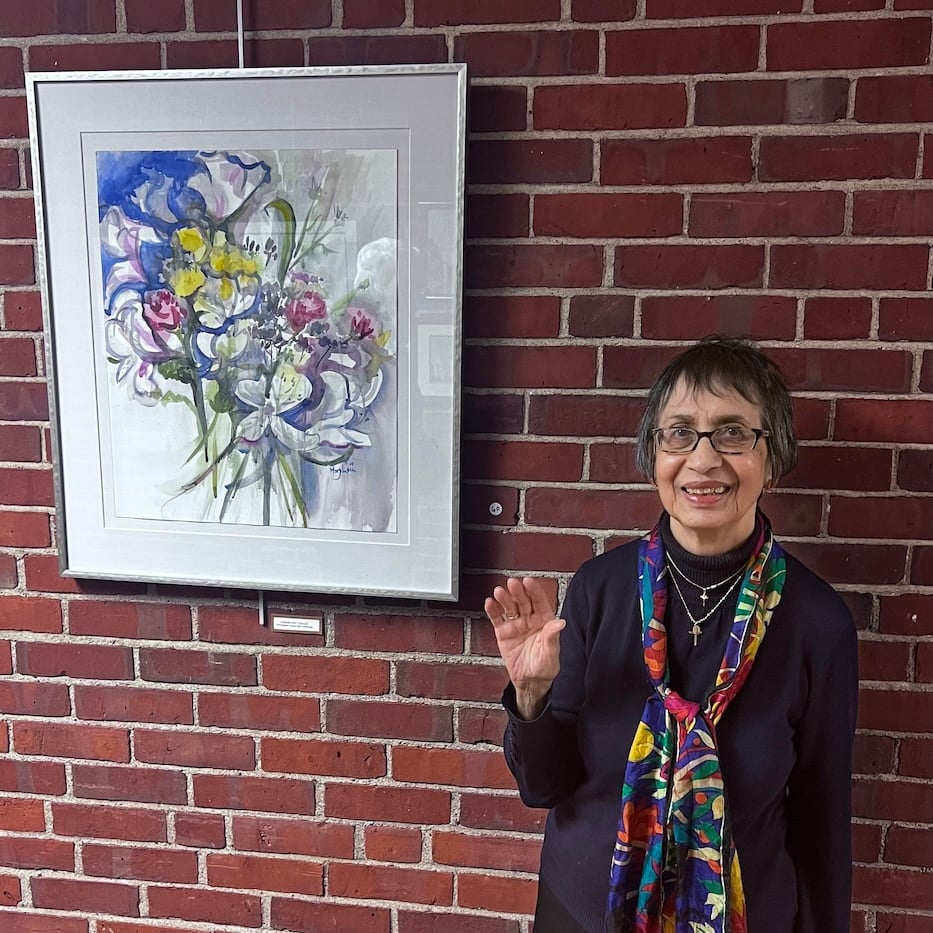 Courtesy Gregory Horan.
Courtesy Gregory Horan.
The following citizen contribution was submitted by Gregory Horan, whose mother, watercolor artist Mary Lou Horan, passed away on Sept. 17 of last year.
You can tell it's the New Haven Green as soon as you see it. Paths, dotted with passers-by, criss-cross the grass, meeting at the flagpole at its center. Trees line the space, their branches extended gracefully out towards Chapel and Church Streets on one side, Elm and Temple on the other. Around the space, a whole city seems to be waking up: the courthouses and public library, the churches lining the sidewalks, the gingerbread house of City Hall and the gentle curve of East Rock in the distance.
For over four decades, my mother, Mary Lou Horan, painted the iconic landmarks of New Haven—the Green, Chapel Street, and Wooster Square. Her paintings captured the essence of what made this city so special for its residents. For her, it wasn’t just about showcasing her talent; it was about bringing her mission of joy, peace, and love to others. When she passed away last year at the age of 83, she left a legacy of celebrating the Elm City through the arts.
 My mother, who adored New Haven, found beauty in its churches, houses, and storefronts, viewing them as stories waiting to be told. The city raised her: she was a proud graduate of James Hillhouse High School, and found a home in Westville after studying art for several years in Ohio, where she worked with the painter Ernie Spring.
My mother, who adored New Haven, found beauty in its churches, houses, and storefronts, viewing them as stories waiting to be told. The city raised her: she was a proud graduate of James Hillhouse High School, and found a home in Westville after studying art for several years in Ohio, where she worked with the painter Ernie Spring.
Back in New Haven, she worked closely with the artist Hilda Levy, at a then-nascent Creative Arts Workshop. Often, she would stroll through neighborhoods, identifying houses that would appeal to her and then researching their architectural elements. This meticulous study led to her final creations.
Growing up, I didn’t always understand her patience, but now I realize that she was teaching a profound lesson beyond the realm of art. She was showing me how to slow down and truly observe the world around me.
She hosted watercolor classes in her basement, sharing her expertise with those who were new to the art form. From young students to seniors, she never made anyone feel intimidated by art. Instead, she encouraged them to keep painting and explore their creative side.
She was also actively involved in various art exhibitions at institutions such as the Arts Council of Greater New Haven, Creative Arts Workshop, City Gallery, the John Slade Ely House (now the Ely Center of Contemporary Art), and New Haven Free Public Library. After one such exhibition at Claire's Corner Copia downtown, she caught the eye of the New Haven Preservation Trust, who lauded her approach in a news bulletin published in the 1990s.

Horan at an exhibition of her work in Hamden in 2022. Contributed Photo.
"Mary Lou typically begins by studying a neighborhood and identifying houses that appeal to her," wrote the late Bill Stubbs, once the Preservation Trust's tour director, in the piece. "She picks one and studies its architectural elements: columns, Italianate styling, dormers, etc. She goes to the library to deepen her understanding of the style and period. Finally she turns to her water-colors. This careful preparation doubtless enhances the popularity of her work among preservationists."
Additionally, she worked as a recreational therapist at Fellowship Place for a decade and hosted a weekly art class at West Haven Senior Center for over 25 years.
Mary Lou Horan wasn’t just an artist; she was a kind soul, a patient teacher, and someone who found magic in the everyday. Through her eyes and her watercolors, New Haven became not just a city, but a living, breathing work of art.